ActiveRunningThese five exercises improved my running and relieved my lower back painIt’s the first time I’ve been able to run pain freeWhen you purchase through links on our site, we may earn an affiliate commission.Here’s how it works.
ActiveRunningThese five exercises improved my running and relieved my lower back painIt’s the first time I’ve been able to run pain freeWhen you purchase through links on our site, we may earn an affiliate commission.Here’s how it works.
It’s the first time I’ve been able to run pain free
When you purchase through links on our site, we may earn an affiliate commission.Here’s how it works.
(Image credit: Getty Images)

(Image credit: Getty Images)
Unable to put up with the pain any longer, I decided to consult my coach. He suggested I needed more glute and core activation exercises in my warm ups, somethingStephanie Davis, Olympian and Head Coach atRunnaalso says is very important. “Stronger glute and core muscles will ensure the pelvis is correctly aligned and help us move better," she says. “Our glutes are one of the biggest muscles in the body, but also one of the laziest, so it’s important to actively engage them before we head out for a run. “
(Image credit: Getty Images)
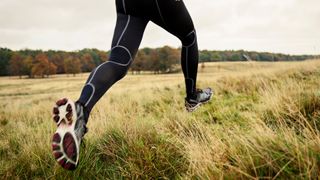
(Image credit: Getty Images)
We also looked at a couple of running drills to help me land more midfoot, as I was heading into heel-striker territory. “A heel striker is seen to be more susceptible to hip and knee injuries,” explains Stephanie. “Whereas a midfoot landing allows your weight to be evenly distributed, which helps reduce the amount of impact on the body. The less force and stress through our muscles, bones and tendons, the lower our chance of injury and the more we can run.”
I completed the five new exercises my coach gave me, four times a week as part of my warm up, including before my long weekend run. I’d only been doing them for a week, but as I bounded back into the driveway Saturday morning I looked down at myfitness tracker– not only was my run time better, but for the first time ever my lower back and left hip weren’t in any pain. Even better, I haven’t had this pain since.
1. Single leg toe taps
(Image credit: Future)
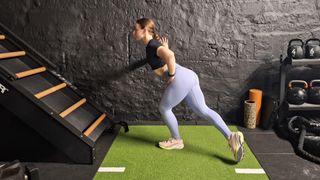
(Image credit: Future)
Although this exercise is simple, I found it the most effective for my glutes, which I struggle to activate as I’m sat down for the majority of the day. But after these they would be aching. To perform, start with a soft bend in the knee, hinge at the hips and tap your toe behind you to the opposite side (like in the picture), then directly behind you and, finally, to the same side as the active leg. I would do three sets of 10 to 12 reps on both legs.
2. Rower plank
(Image credit: Future)
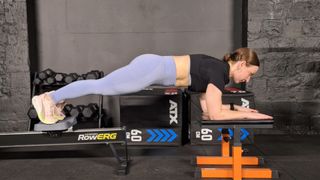
(Image credit: Future)
“A strong core is essential for good running technique and therefore more efficient running,” says Stephanie. “If your core is weak then you rely on other muscles to maintain form, which uses more energy.” Planks are one of the best exercises for activating those deep core muscles. But I find them too easy on my forearms. A rower plank takes it up a step, as your core has to work twice as hard to stop your feet sliding backwards on the seat– give them a go!
Sign up to the T3 newsletter for smarter living straight to your inbox
Get all the latest news, reviews, deals and buying guides on gorgeous tech, home and active products from the T3 experts
3. Single leg RDL with a reach
(Image credit: Future)

(Image credit: Future)
I personally don’t enjoy any form of RDLs, especially single ones, but it’s acompound exercisethat works lots of muscles in the body. “Single leg RDLs improve the hamstrings ability to tolerate load when running, which can lower our chance of injury,” explains Stephanie. “The reach adds another element to this exercise –it forces us to use our core and challenges our balance.” It also activates your glutes more too.
4. Calf raise walks
(Image credit: Future)
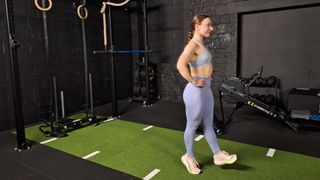
(Image credit: Future)
Although a little tedious to do, these were brilliant at conditioning me to land midfoot, as you have to stay elevated on them throughout the entire walk. They’re also great for working the calf muscles too, which are key when pounding the pavement. “They propel us forward with every step so they work hard when we are running,” says Stephanie. “The stronger our calf muscles, the more powerful and resilient they’ll be.”
5. Ankle dribble
(Image credit: Future)
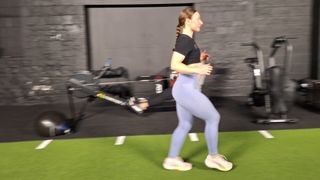
(Image credit: Future)
Another drill that’s really helped me learn to land on my midfoot, rather than lead with my heel, as well as stay more upright while running. “The purpose of this drill is to improve our posture and teach us where to strike the ground with our foot (directly underneath us),” says Stephanie.

How to watch the Nintendo Switch 2 Direct and what to expectWe should get a deep dive and more details on the Switch 2 in April
We should get a deep dive and more details on the Switch 2 in April
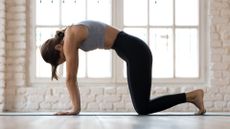
A fitness expert says you only need this three minute mobility routine to improve your posture – so I tried itWas three minutes really enough to ease stiffness in my shoulders, neck and hips?
Was three minutes really enough to ease stiffness in my shoulders, neck and hips?